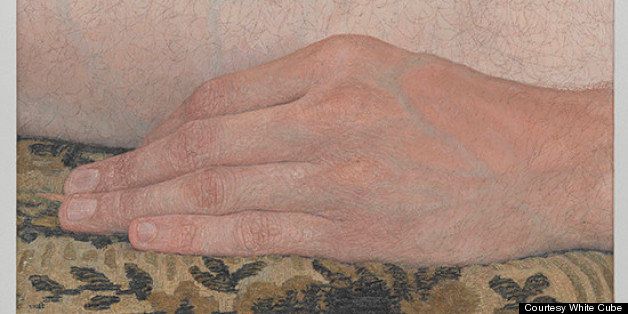
Ellen Altfest was born in New York, NY. She received her MFA from Yale in 1997 attended Skowhegan School of Painting and Sculpture in 2002. She has had recent solo exhibitions at the New Museum, NY (2012); Chinati Foundation, Marfa, TX (2010); and White Cube, London, UK (2011). She received a Guggenheim Fellowhip in 2012 and is currently exhibiting in the 2013 Venice Biennale.
She is represented by White Cube Gallery, London
The full interview can be read on Burnaway
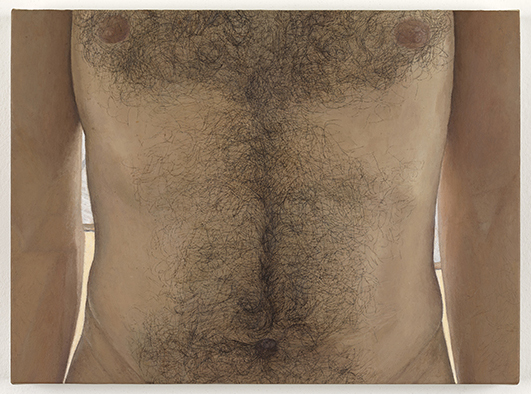
Torso, 2011, oil on canvas, 10 1/4 x 13 13/16 in.
Ridley Howard: Images and art move so quickly these days. We have such a short collective attention span, for paintings or anything else. Instagram impulses seem to overlap with painting for a lot of young artists. It's really refreshing to think about your almost monastic devotion to craft, paintings, subjects. Is time with your work, or the way you think about painting, remarkably different or separated from the rest of your life?
Ellen Altfest: Sometimes it can feel that way. I look for balance between engaging with the world around me and retreating from it. That might be part of the creative process. I have a mixed feeling for my phone; it can take me out of the moment in the studio.
Maybe it's the difference between inside and outside. In the studio, I want to look out and lose the awareness of my external self to enter into making the work.
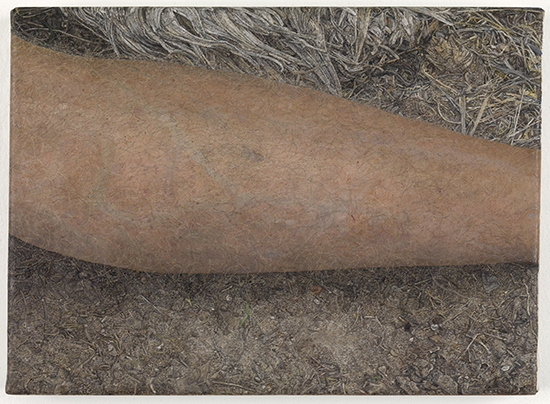
The Leg, 2010, oil on canvas, 8 x 11 in
There is something about the cropping of your paintings that makes the body parts seem dissociative. The whole world is within the frame of the painting, and it isn't at all violent. There's something startling and interesting about that. You create an entire world out of an armpit. It's some combination of focus and space.
I do really get into that small space in the painting. I like the rounded shape of that armpit, that's kind of pleasing to me. Separating the parts of the model from the rest of the body is a way I can claim them and make them my own, and turn them into compositions.
It starts to feel as thought the human parts are still lifes. Not just in the sense that the paintings are still, but in the incredible amount of time it must have taken to paint them. The model sits still for weeks and weeks, in a sense, becoming like a plant, not just in the painting, but in real life.
I think I learned to be an artist as a still life painter and then applied that language to the figure. Maybe the body is more understandable when it is broken down into knowable pieces. I also like that the parts of the body become their own things, separate from the person they belong to. There's a funny sense of ownership that happens too, like this part of a person belongs to me in a way, while I'm working with it.
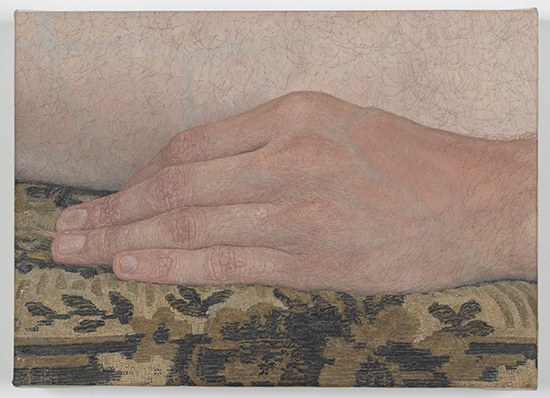
The Hand, 2011, oil on canvas, 6 1/4 x 8 5/8 in.
Strangely, when looking at one of your paintings, time is simultaneously slowed down and sped up. The viewer becomes aware of your process and concentration and time, but can't possibly spend that same amount of time looking. So our experience is of your process, sped up. Which is wonderful and animates these super still paintings. When you look at a finished painting, do you see a more compressed, singular image, or is that sense of time still really palpable for you?
When a painting is finished I see it as a whole. I can remember the struggle but I don't see it in the painting.
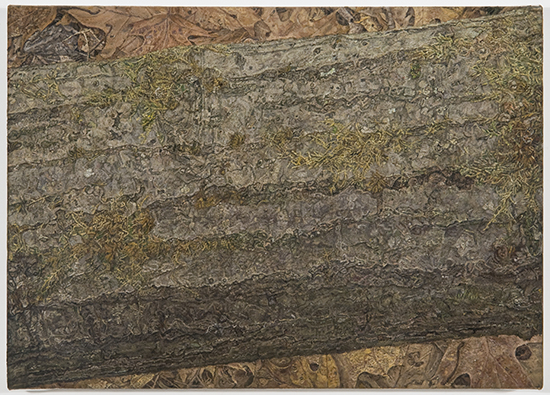
Tree, 2013, Oil on canvas, 8 1/8 x 11 1/4 in.
Your paintings aren't realistic in a purely descriptive sense. We are very aware of the paint, its texture, the way it's built up in layers and layers of subtly shifting colors. But it is clear that the paintings are born from intense observation. Can you talk about the place where the paintings diverge from what you see?
I think that might be the unconscious part of the painting, a by-product of the process. I'm interested in creating something subjective, but also translating something from my eye to the canvas is a subjective process in itself. I try to be faithful to what I see but not in a logical way. Maybe the lack of logic is where that point of departure happens.
I find a certain sense of humor in the work at times. Plants as characters, body parts as characters -- a certain absurdity in the frontality or cropping. Do you ever think they're funny?
Yes, I'm glad you see that. I have a weird sense of humor. My friends tell me my work is true to my personality.
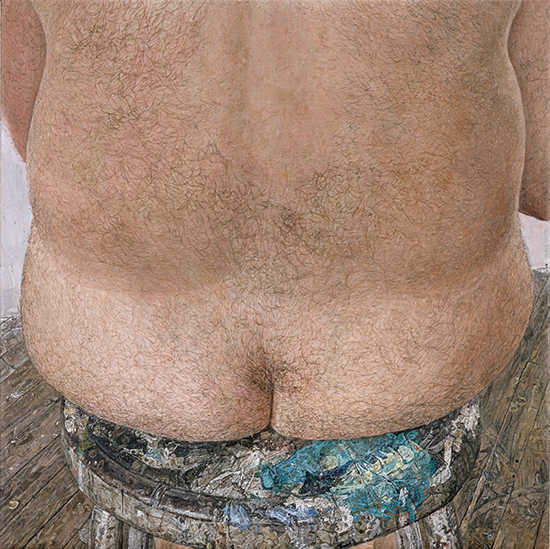
The Butt, 2007, oil on canvas, 13 x 13 in.
The process of making these paintings must be so intense and intimate. This is reflected in our experience of them. It's easy to imagine moments of both profound communication as well as really suffocating discomfort. I imagine this is true for both human and plant subjects.
The model is part of the work, which is an intimate relationship, and a real bond can develop between us. Our dynamic, and how he is feeling, affects the atmosphere of the studio and my level of focus. Ultimately, it's about part of the model I'm painting, not about the model himself. I have a separate connection with that body part, just like I would with a tree or plant.
It's nice to think about your paintings in Venice, down the street from the Accademia. Venetian painters appeared to introduce a figure/landscape relationship that you play with. Do you look at Bellini, Giorgione, Titian?
I love Renaissance painting. I just arrived in Venice and have already seen so much. I hope to see every Bellini that is here. Being here is so inspiring.
Read the rest on Burnaway
Photo credits, in order:
Torso
2011
© Ellen Altfest
Photo: Todd-White Art Photography
Courtesy White Cube
The Leg
2010
© Ellen Altfest
Photo: Todd-White Art Photography
Courtesy White Cube
The Hand
2011
© Ellen Altfest
Photo: Ben Westoby
Courtesy White Cube
Tree
2013
© Ellen Altfest
Photo: Cary Whittier
Courtesy White Cube
The Butt
2007
© Ellen Altfest
Photo: Bill Orcutt, New York
Courtesy White Cube